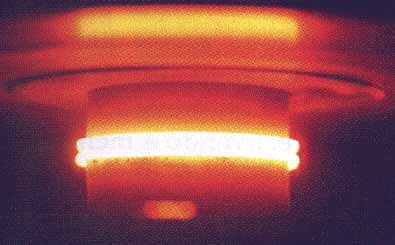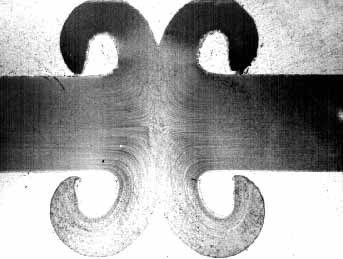|
Friction welding(FW) is a class of solid-state welding processes that generates heat through mechanical
friction between a moving workpiece and a stationary component, with the addition of a lateral force called
"upset" to plastically displace and fuse the materials. Technically, because no melt occurs, friction
welding is not actually a welding process in the traditional sense, but a forging technique. However,
due to the similarities between these techniques and traditional welding, the term has become common.
Friction welding is used with metals and thermoplastics in a wide variety of aviation and automotive
applications.
Benefits
The combination of fast joining times of the order of a few seconds, and the direct heat input at the
weld interface, gives rise to relatively small heat affected zones. Friction welding techniques are
generally melt-free, which offers the advantage of avoiding grain growth in engineered materials such
as high-strength heat-treated steels. Another advantage is that the motion tends to "clean" the surface
between the materials being welded, which means they can be joined without as much prior preparation.
During the welding process, depending on the method being used, small pieces of the "plastic" metal will
be forced out of the working mass in rippled sheets of metal known as "flash". It is believed that the
flash carries away debris and dirt.
Another advantage of friction welding is that it allows dissimilar materials to be joined.This is
particularly useful in the aerospace field, where it is used to join lightweight aluminum stock to
high-strength steels. Normally the wide difference in melting points of the two materials would make
it impossible to weld using traditional techniques, and would require some sort of mechanical connection
instead (bolts, etc.). Friction welding provides a "full strength" bond with no additional weight.
Another common use for these sorts of bi-metal joins is in the nuclear industry, where copper-steel
joints are common in the reactor cooling systems.
Friction welding is also used with thermoplastics, which act in a fashion analogous to metals under
heat and pressure. The heats and pressures used on these materials are much lower than on metals, but
the technique can be used to join metals to plastics with the metal interface being machined.
For instance, the technique can be used to join eyeglass frames to the pins in their hinges. The lower
energies and pressures used allows for a wider variety of techniques to be used.
|
 마찰용접부
마찰용접부
 마찰용접부
마찰용접부